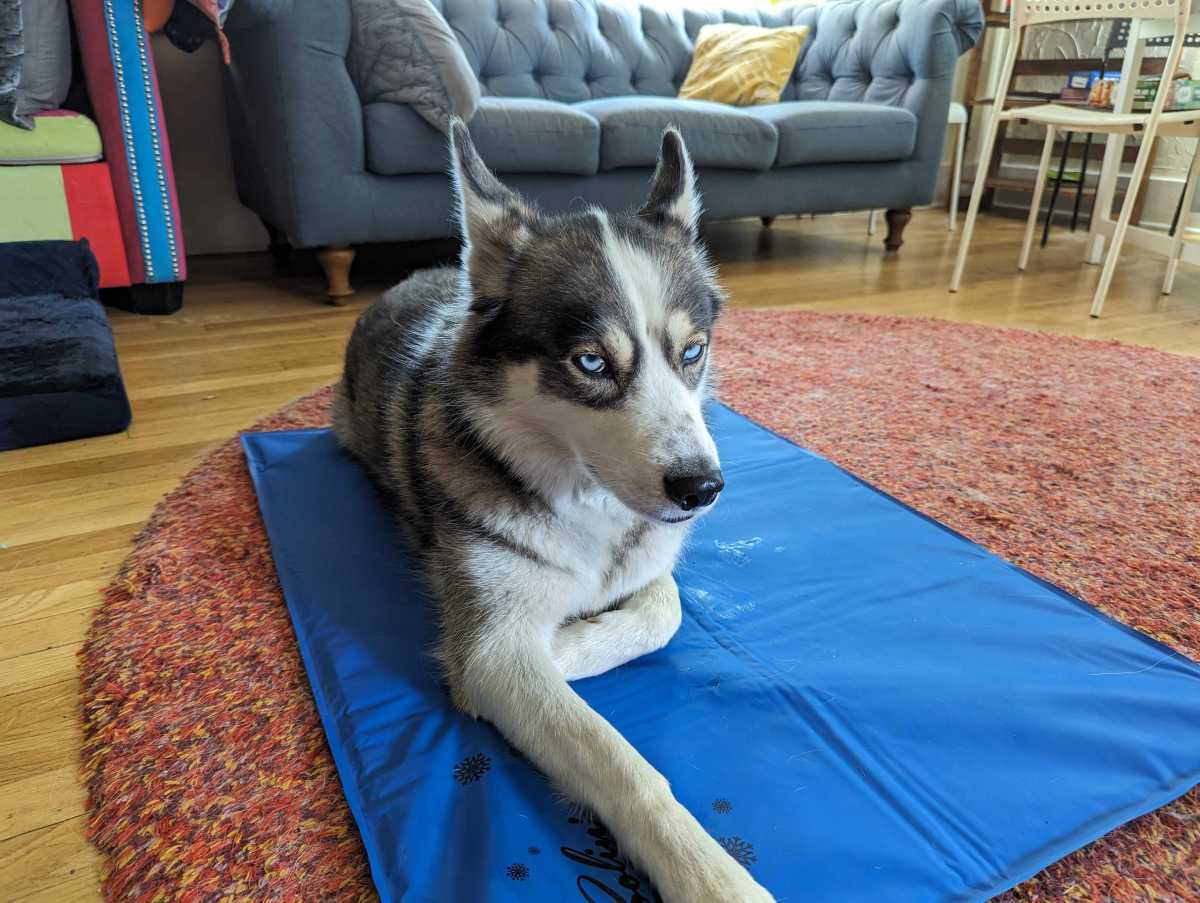Extreme Heat Is Ramping Up All Over the World. So Are Solutions.
ENVIRONMENT, 24 Jul 2023
Claire Elise Thompson | Grist - TRANSCEND Media Service
19 Jul 2023 – From Seville to Phoenix, city governments and community-based organizations are trying new strategies to protect residents from deadly heat.
The Vision
“We are in uncharted territory.”
— Christopher Hewitt, director of climate services at the World Meteorological Organization
The Spotlight
No matter where you live in the world, you’ve likely noticed that this summer has been abnormally hot.
We’re in an El Niño year, a warming pattern in the Pacific Ocean that fuels higher temperatures and more weather disasters. The Atlantic Ocean is also experiencing anomalously high surface temperatures, and an underwater volcanic eruption in the South Pacific last year shot vaporized seawater into the stratosphere, contributing to the greenhouse effect. It’s a stroke of “random bad luck,” according to Daniel Swain, a climate scientist at the University of California, Los Angeles.
But Swain and other scientists also agree it is now undeniable that our changing climate is making extreme heat more severe and more common. And while some of those other drivers of this year’s record heat waves are temporary, dangerously hot weather is a reality that we are likely to deal with for the rest of our lives.
Although in many ways it is less visible than other climate impacts like storms and wildfires, heat causes more deaths in the U.S. than any other type of extreme weather. In Europe, heat waves last summer killed at least 61,000, and likely many more.
With the world only poised to continue getting hotter, how we prepare for and adapt to extreme heat is of increasing concern — and urgency. And communities all over the world are beginning to test and implement all kinds of solutions to beat the heat. In today’s newsletter, we’re highlighting three places that have launched innovative measures to protect residents from scorching temperatures.
By the way, if you want more heat coverage in your inbox, Grist just launched a special series and pop-up newsletter called Record High, which will cover this season of record-breaking heat from every angle. Subscribe right here.
![]()
Seville
In the famously warm city of Seville, Spain, the government has adopted a variety of infrastructure improvements, planting trees, building public fountains, and looking to historical architecture to increase shade cover. And after last year’s deadly European heat waves, the city is also testing a new strategy aimed at building awareness.
Last summer, Seville launched the world’s first rating and naming system for heat waves. It’s akin to the one the World Meteorological Organization has used for hurricanes since the 1950s, which researchers have lauded for contributing to “a culture of preparedness and prevention” that they hope to emulate for heat waves. Giving a name to an extreme weather event makes it easier to remember, easier to report on and communicate about, and research has suggested that it makes people more likely to take precautions.
Seville’s system ranks heat waves on a scale from 1 to 3, with 3 being the most severe. Category 3 heat waves are then named in reverse alphabetical order — the month after Seville launched its effort, Zoe became the world’s first named heat wave.
Different levels of heat waves also trigger particular public services and emergency responses, like information campaigns and cooling centers.
Europe’s current heat wave has been popularly dubbed Cerberus, after the mythological three-headed dog that guards the gates of hell — a fact of concern for some scientists, who worry that sensationalizing the heat wave with a name like that will lead more to panic than preparedness. But in Seville, it bears the official name of Xenia, and is part of the pilot effort to raise heat awareness.
Five other cities also launched similar pilot programs last year, with ranking systems tailored to each city’s unique climate.
![]()
Phoenix
Phoenix is one of the hottest cities in the U.S., and this year it has already suffered 19 days in a row of temperatures over 110 degrees, with no end in sight — breaking a record that the city set in 1974. That kind of heat is dangerous to anyone, but in Phoenix it is also evident that the risks of oppressive heat are not borne equally. Annual death reports reveal that those most likely to die of heat exposure are unsheltered or live in mobile homes, and lower-income communities are often heat islands.
In 2017, Maricopa County, where Phoenix sits, published a 120-page Heat Action Planning Guide as a community-led effort to identify solutions for the most historically disenfranchised neighborhoods. But, as freelancer Emma Loewe reported for us, it took another five years to actually begin implementing the solutions outlined.
Residents wanted to see more decisive action, so, last year, the city government set aside $2.8 million to create a brand new Office of Heat Response and Mitigation.
A government office dedicated solely to heat solutions was a first in the U.S. The goal is to speed up the deployment of heat-mitigation measures and ultimately save lives in a city that can see hundreds of heat deaths each year.
Last summer, the office distributed cooling supplies like hats and umbrellas, and also expanded the network of public cooling centers and hydration stations in the area. Longer-term plans include doubling the city’s tree cover, deploying heat-reflective pavement, and creating “cool corridors” with a combination of shade, sprinklers, and vegetation.
Whether the office can help Phoenix stay ahead of rapidly rising temperatures is still to be seen — heat-related deaths in 2022 increased by 25 percent over the previous year, according to a report published by the county. This summer, the office is fighting the battle again, and trying to get the information and resources to those who need it most.
![]()
France
One particularly vulnerable group when it comes to heat is the elderly. As our bodies age, they lose some of their ability to regulate temperatures, for a variety of reasons. And older folks are also more likely to live in isolation. As freelancer Sofie Kodner reported for Grist last year, around half a million older people in France live without any social connections, some going months without so much as speaking to another person.
In 2003, a devastating European heat wave killed at least 15,000 seniors in France. After that shock, one community organization called Petits Frères des Pauvres began a new approach to protect seniors from both heat and loneliness — coordinating volunteers and municipal workers to check in on elderly people during hot spells.
In coordination with local town halls, the organization developed a registry of elderly people who live alone, and during a heat wave, volunteers call and visit everyone on their town’s list.
A number of organizations have gone even further, pioneering an intergenerational housing movement that pairs seniors who live alone with young housemates looking for reduced rent.
Kodner spoke with one such pair. Last summer, 84-year-old Josette Paoni and university student Javier Garcia were paired together, and spent the summer living in Paoni’s un-air-conditioned home in the South of France. Not only was Garcia there to seek help if Paoni were to fall victim to heat stress, he also looked after her, closing the blinds against the sun, bringing her water and damp towels, and creating a meaningful source of connection. “Je demande tous les matins à Javier un bisou,” Paoni said — I ask Javier for a kiss every morning.
![]()
For more immediate DIY measures you can use to stay cool at home, check out this roundup for tips on strategic fan placement, how to make your windows work their hardest, and even a video tutorial on how to make a “swamp cooler.” The roundup also recommends investing in the social infrastructure that is often one of the most important resources in crisis times — check on your neighbors! Especially if you know that they might be particularly vulnerable to heat.
More Exposure
- Read: about the intersection between rising temperatures, extreme weather events, and diseases (Grist and the AP)
- Read: more from Grist’s Record High series: an explainer on the science behind climate change and heat waves; a piece on Amazon’s delivery driver strike, fueled in part by demands over heat-safety measures; and a look at the particularly concerning impacts of extreme heat on people incarcerated in tribal jails
- Read: advice on preparing for hot spells (Washington Post)
- Browse: a list of resources to help you find cooling centers in your state (National Center for Healthy Housing)
See for Yourself
How’s the weather where you live? (No … seriously!) In a climate-changed world, chatting about the weather is not the lame small talk that it may have once been — it’s an important part of processing our changing surroundings and checking in with one another.
So, Join the Discussion below and tell us how the forecast is looking for you this July, and how you’re staying cool.
A Parting Shot
Here’s my weather update: I moved to Seattle at the start of this summer and, friends, the lack of AC here has me melting. Every night, I put the fan on blast and stick this cooling pad in the freezer to make a comfortable spot for my dog. He appreciates it, I think.

_____________________________________________
Claire Elise Thompson is Grist‘s Associate Editor.
Tags: Climate Change, Global warming, Solutions
DISCLAIMER: The statements, views and opinions expressed in pieces republished here are solely those of the authors and do not necessarily represent those of TMS. In accordance with title 17 U.S.C. section 107, this material is distributed without profit to those who have expressed a prior interest in receiving the included information for research and educational purposes. TMS has no affiliation whatsoever with the originator of this article nor is TMS endorsed or sponsored by the originator. “GO TO ORIGINAL” links are provided as a convenience to our readers and allow for verification of authenticity. However, as originating pages are often updated by their originating host sites, the versions posted may not match the versions our readers view when clicking the “GO TO ORIGINAL” links. This site contains copyrighted material the use of which has not always been specifically authorized by the copyright owner. We are making such material available in our efforts to advance understanding of environmental, political, human rights, economic, democracy, scientific, and social justice issues, etc. We believe this constitutes a ‘fair use’ of any such copyrighted material as provided for in section 107 of the US Copyright Law. In accordance with Title 17 U.S.C. Section 107, the material on this site is distributed without profit to those who have expressed a prior interest in receiving the included information for research and educational purposes. For more information go to: http://www.law.cornell.edu/uscode/17/107.shtml. If you wish to use copyrighted material from this site for purposes of your own that go beyond ‘fair use’, you must obtain permission from the copyright owner.
